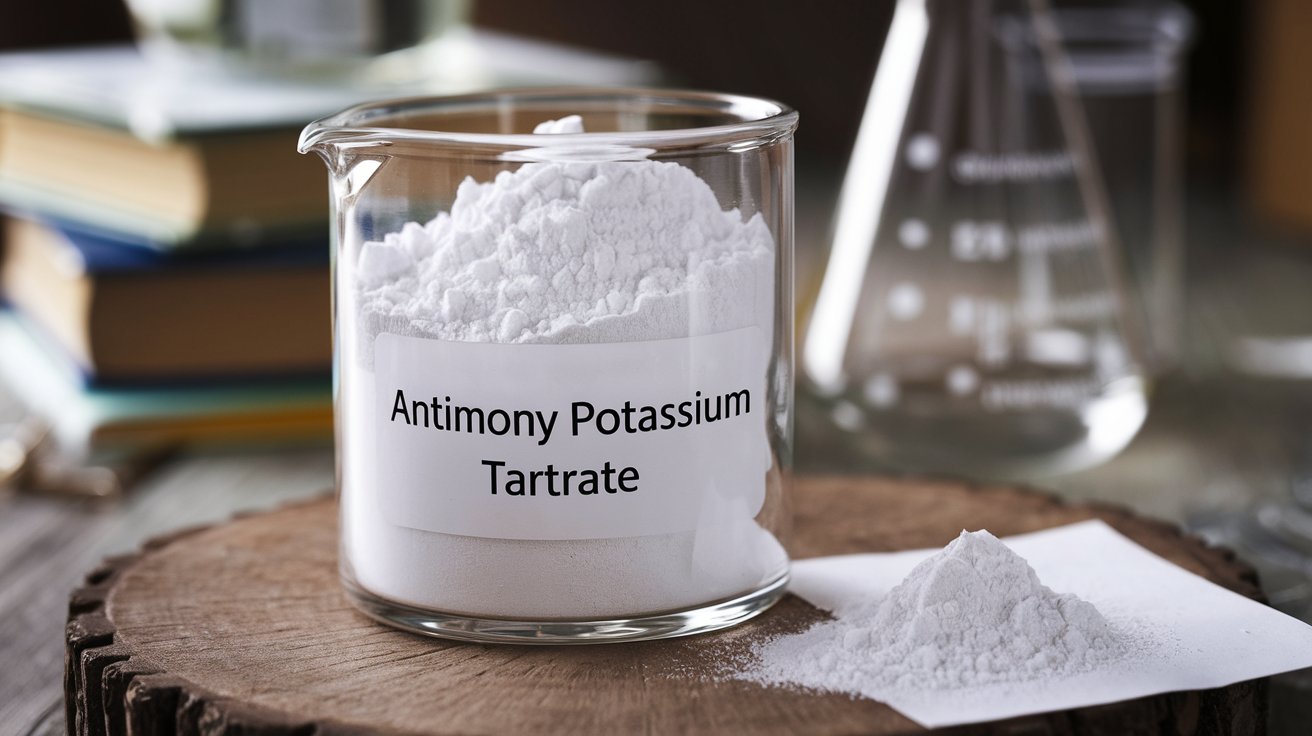
What is Antimony Potassium Tartrate? This compound, also known as tartar emetic, has a long history in medicine and industry. Antimony Potassium Tartrate is a white crystalline powder that dissolves in water, forming a solution used for various purposes. Historically, it served as a treatment for parasitic infections and as an emetic to induce vomiting. However, its use in medicine has declined due to toxicity concerns. Today, it finds applications in the textile industry for dyeing and printing fabrics, and in the production of certain types of glass. Despite its reduced medical use, Antimony Potassium Tartrate remains a compound of interest due to its unique properties and historical significance.
Key Takeaways:
- Antimony potassium tartrate, or tartar emetic, has a rich history in medicine, industry, and traditional practices. It was used to treat infections, as a mordant in dyeing fabrics, and even as a poison in ancient Rome.
- Despite its toxic nature, antimony potassium tartrate still holds modern relevance. It is being studied for potential new medical applications and is used in chemistry education to demonstrate chemical reactions.
What is Antimony Potassium Tartrate?
Antimony potassium tartrate, also known as tartar emetic, is a chemical compound with a rich history and diverse applications. This compound has been used in medicine, industry, and even in some traditional practices. Let's dive into some fascinating facts about this intriguing substance.
Historical Significance
Antimony potassium tartrate has been around for centuries, playing various roles in different cultures and industries.
- Ancient Medicine: Used in ancient times as a treatment for parasitic infections.
- Alchemical Roots: Alchemists believed it could transform base metals into gold.
- 19th Century Medicine: Commonly prescribed for treating fevers and other ailments.
- Traditional Remedies: Used in some traditional medicine practices in Asia and Africa.
Chemical Properties
Understanding the chemical properties of antimony potassium tartrate can help explain its various uses and effects.
- Chemical Formula: The formula is K(SbO)C4H4O6·½H2O.
- Appearance: It appears as a white crystalline powder.
- Solubility: Soluble in water but insoluble in alcohol.
- Toxicity: Highly toxic if ingested in large amounts.
Medical Uses
Despite its toxicity, antimony potassium tartrate has been used in medicine, particularly in the past.
- Antiparasitic: Effective against certain parasitic infections like schistosomiasis.
- Emetic: Induces vomiting, used in cases of poisoning.
- Historical Treatments: Once used to treat syphilis and other infections.
- Modern Medicine: Rarely used today due to safer alternatives.
Industrial Applications
Beyond medicine, antimony potassium tartrate has found uses in various industrial processes.
- Textile Industry: Used as a mordant in dyeing fabrics.
- Ceramics: Helps in the production of certain types of ceramics.
- Glass Manufacturing: Acts as a fining agent to remove bubbles.
- Fireproofing: Used in fireproofing treatments for textiles.
Safety and Handling
Given its toxicity, proper safety measures are crucial when handling antimony potassium tartrate.
- Protective Gear: Always wear gloves and safety goggles.
- Storage: Store in a cool, dry place away from incompatible substances.
- First Aid: In case of ingestion, seek medical help immediately.
- Disposal: Dispose of according to local hazardous waste regulations.
Environmental Impact
The environmental impact of antimony potassium tartrate is an important consideration.
- Water Contamination: Can contaminate water sources if not disposed of properly.
- Soil Pollution: May cause soil pollution, affecting plant and animal life.
- Bioaccumulation: Can accumulate in the bodies of aquatic organisms.
- Regulations: Subject to strict environmental regulations in many countries.
Fun Facts
Here are some lesser-known, interesting tidbits about antimony potassium tartrate.
- Historical Poison: Allegedly used as a poison in ancient Rome.
- Alchemy Symbol: Represented by the symbol of a wolf in alchemy.
- Color Change: Changes color when exposed to certain chemicals.
- Antimony Discovery: Played a role in the discovery of the element antimony.
Modern Relevance
Despite its historical significance, antimony potassium tartrate still holds some relevance today.
- Research: Studied for potential new medical applications.
- Education: Used in chemistry education to demonstrate chemical reactions.
The Final Word on Antimony Potassium Tartrate
Antimony potassium tartrate, also known as tartar emetic, has a rich history and diverse applications. From its early use in medicine to its role in modern industries, this compound has proven both beneficial and hazardous. Its use in treating parasitic infections and as a mordant in dyeing showcases its versatility. However, the toxic nature of antimony potassium tartrate demands careful handling and respect.
Understanding the chemical properties and historical significance of this compound helps us appreciate its impact on various fields. While its medical applications have diminished due to safer alternatives, its industrial uses remain relevant. Always prioritize safety when dealing with such substances.
In essence, antimony potassium tartrate is a fascinating compound with a storied past. Its contributions to medicine and industry highlight the importance of continued research and responsible usage. Stay informed and handle with care.
Frequently Asked Questions
Was this page helpful?
Our commitment to delivering trustworthy and engaging content is at the heart of what we do. Each fact on our site is contributed by real users like you, bringing a wealth of diverse insights and information. To ensure the highest standards of accuracy and reliability, our dedicated editors meticulously review each submission. This process guarantees that the facts we share are not only fascinating but also credible. Trust in our commitment to quality and authenticity as you explore and learn with us.
